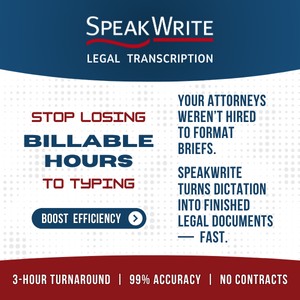Behavioral feedback focuses on observable actions rather than character traits, attitude or intent. Unlike judgmental feedback, which often feels personal, behavioral feedback highlights what someone did and the impact it had. This approach helps the recipient clearly understand what needs to change, offering a constructive path forward instead of leaving them feeling personally criticized.
For example, instead of saying, “You're always late,” behavioral feedback might sound like, “You arrived 15 minutes late to today’s meeting, which delayed the start of the agenda for all involved.”
In the example above, we’ve removed one major trigger, vague or value-laden language. ‘Always’ is a good illustration of vague and unspecific language. By sticking to facts, describing specific outcomes and linking the unwanted action to unwanted results, you allow others to respond thoughtfully rather than react emotionally.
People are more likely to hear what is being communicated and adjust when the feedback doesn’t feel like a personal attack; that’s simply human nature. Behavioral feedback builds trust and accountability, fostering a culture where growth is not only possible but expected.
The Challenge: Let’s Talk ...
However, because its purpose isn’t just to inform but to engage, understand and improve, good behavioral feedback requires conversation. When feedback is delivered as a one-way directive, it can shut down dialogue and signal that the other person’s perspective doesn’t matter. When it’s part of a conversation, it invites reflection, questions and shared problem-solving. The goal of behavioral feedback is to build mutual understanding and buy-in, which makes behavior change far more likely than simply issuing an instruction or correction.
This approach is challenging, but it is worth mastering. Good behavioral feedback shows respect for the other person’s experience and gives space to clarify intentions, uncover context and agree on next steps. Here are some examples of conversation starters to help address and improve employees’ unproductive behaviors and habits:
- “I’ve noticed three recent deadlines have been missed. Let’s review what support you need to stay on track.”
- “Let’s talk about how you can proactively contribute when we get a client intake.”
- “It's great that you complete your tasks on time, but you aren’t engaging with our other teammates. Let’s work on collaboration.”
- “I’ve noticed that there have been delays in responding to messages and follow-ups, which is starting to impact team coordination. Let’s talk about how we can create a plan to strengthen your responsiveness and support you in meeting expectations more consistently.”
After the Conversation, Follow-Through Is Everything
The conversation is just the beginning. What happens after it can determine whether the feedback leads to real change. Following up in writing, even with a brief email, reinforces the discussion and helps both parties stay aligned with expectations. It also signals that the conversation wasn’t just a formality; it mattered. And while you are sending that email, set a calendar reminder to check in after a couple weeks or a month.
By showing commitment to the person’s growth, you provide an opportunity to either offer support if there’s little progress or recognize their meaningful improvement. Acknowledging even small steps forward is essential; it boosts confidence and strengthens motivation by showing that effort is seen and appreciated.
By showing commitment to the person’s growth, you provide an opportunity to either offer support if there’s little progress or recognize their meaningful improvement.





